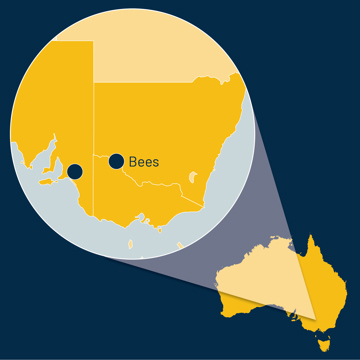Background
Duxton Bees owns and manages ~1,650 hives which are primarily located in the Murray Darling region. Duxton Bees aims to capitalise on the growing demand for pollination services, honey and beeswax production, and queen bee exporting. The company aims to be the largest bee enterprise in the Southern Hemisphere and intends to become an industry leader in the context of environmental and socially responsible investing, while driving long-term shareholder value through capital growth and dividends.
Fundamental Drivers of Value
Fragmented Pollination Industry: There are approximately 25,000 registered beekeepers in Australia with around 672,000 hives.10 Over 80% of these hives are operated by commercial beekeepers, with most commercial apiarists operating between 400 to 800 hives to provide pollination and honey production. 11
Demand Surge for Pollination Services: There are 32 Australian agricultural industries that are reliant on pollination to generate a commercial yield.12
There has been large scale investment into Australian horticulture (in particular, almonds), which have a high reliance on honeybees for pollination. The benefit of pollination to the agricultural industry is estimated between AUD $6 billion and $14.6 billion.13
Constrained Supply of Queen Bees: According to a CSIRO study, Australia has one of the healthiest honeybee populations globally, positioning it well to offer healthy queen bees to the export markets.
10 Australian Honey Bee Industry Council (AHBIC) 2018, Honeybee Monthly News: November
11 AgriFutures Australia. 2017. Beekeeping (honeybees)
12 Dance, A. 2020. ‘Nowhere for our bees to go’: Bushfire, drought and vandalism halt NSW honey production. 10 Daily
13 Hanna, E. 2017. What’s the buzz about bees? Parliament of Australia
